




How Does the Sense of Touch Work? Key Facts for Evs Students
The human body has different types of senses, i.e. taste, sound, touch, smell, and vision.
The sense of touch is the most used sensory tool in our body and also is the largest sense organ of the body. Skin acts as the sense organ for touch, and it is spread all across our body.

Sense of Touch
The touch is a primary sense that we use to identify a lot of substances in daily life.
From touching ice to feeling cold chills to getting a sudden shock on touching a hot pan, we understand temperatures by the touch.
Touch also helps to differentiate between a soft cotton ball to a rough jute bag. Hence, we understand smoothness or roughness.
We can detect a touch on any part of our body, and every touch sends a unique signal to our brain, allowing us to understand where we are being touched.
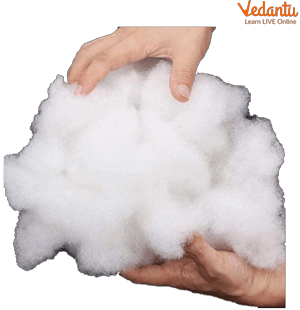
Touching Different Objects for Different Sensations.
Sense Organs
Sense is a stimulus that we understand through different receptors in our body. Those receptors of the senses are called sense organs. We have in total 5 sense organs, i.e. eyes, ears, tongue, nose, and skin. These organs detect various different stimuli, which are light, sound, taste, smell, and touch.
Types of Senses
Vision
Our vision or the visuals that we can see is through our eyes. The eyes are a very important sense organ that allows us to see our environment. The eyes are sensitive to light, and the environment sends the images to our brains.

Eye
Taste
Taste is the sense that is received by us through the tongue. The tongue is a key sense organ that allows us to taste the flavours in our food because of the taste buds. These taste buds on the tongue can sense different tastes.
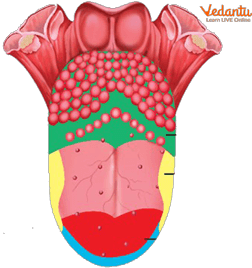
Tongue
Sound
We understand with the help of our ears. Ears are the auditory sense organs and let us perceive sounds. We perceive sounds as vibrations, and the vibrations in the air are captured by the ears.
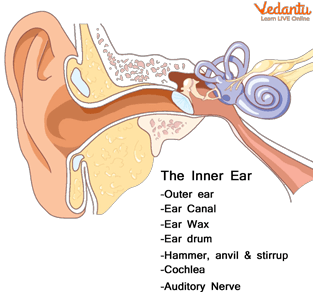
Ear
Smell
The sense of smell is received by the nose. The nose is the sense organ that works alongside the tongue to give us the best sense of flavours in our food. It helps us to perceive all different kinds of smells, and that can be detected by the olfactory receptors, which are minute hair-like outgrowths in the nose.
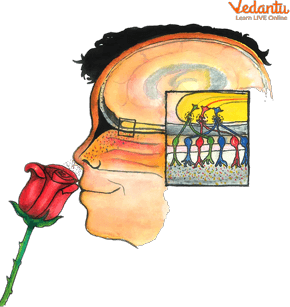
Smelling Through the Nose
Touch
Touch is felt by the skin. The Skin is the largest sense organ of our body. It can detect the sense of touch and anything that has to be felt by touch.
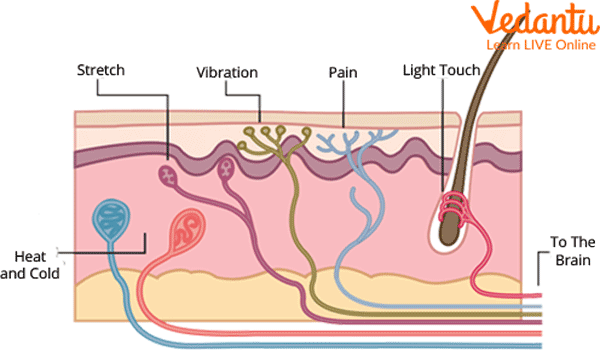
Skin
Examples of Sense of Touch
We can sense temperature, be it cold or hot. Touching boiling water will let us feel the heat.
Touching ice cubes from the refrigerator allows us to feel cold.
We can sense the texture of a substance, be it smooth or rough. Touching a cement wall shall feel rough. Touching a silk cloth will feel very smooth.
We can sense if a substance is solid or liquid. Touching water or oil will allow us to feel a liquid. Touching a piece of iron will feel solid.
We can experience emotions through touch as well. A pat on our shoulders makes us feel proud. Whereas slapping someone shows anger and makes us experience pain.
The Most Sensitive Organ in Our Body
It is the skin that is the most sensitive organ of our body.
Skin is a flexible surface with hair, sweat glands and nails.
Our entire body is covered with a skin layer.
The skin surface has nerves underneath that allow us to understand the location and type of touch by sending the signal to the brain.
Summary
The different sense organs in the human body can detect different kinds of stimuli. Out of all the sense organs, the sense of touch is perceived by the most widespread sense organ. This sense is governed by two sets of sensory nerves in the body. The sense of touch becomes weaker with old age. The sense of touch is the first sense that develops in a baby. We can differentiate between the touch of our dear ones. A touch can make you feel scared or happy.
FAQs on Sense of Touch: Meaning, Importance & Real-Life Examples
1. What is the sense of touch?
The sense of touch is one of the five senses that allows us to feel and understand the world around us through our skin. It helps us detect sensations like temperature (hot or cold), pressure (hard or soft), and texture (smooth or rough) when we come into contact with an object.
2. Which organ is responsible for our sense of touch?
The organ responsible for our sense of touch is the skin. It is the largest organ in the human body and covers us from head to toe. Our skin contains millions of tiny nerve endings that send signals to the brain about what we are touching.
3. What are some examples of things we can feel with our sense of touch?
Our sense of touch allows us to experience a wide variety of feelings. Some common examples include:
Temperature: Feeling the warmth of a blanket or the coldness of an ice cube.
Texture: Noticing the smoothness of a glass window versus the roughness of a tree's bark.
Pressure: Knowing if someone is giving you a gentle hug or pressing a finger firmly on your arm.
Pain: Realising you have touched something sharp, like a pin.
4. How does our sense of touch keep us safe?
The sense of touch acts as a crucial warning system for our body. For example, if you accidentally touch a hot pan, your skin immediately sends a pain signal to your brain, causing you to pull your hand back quickly. This reflex action prevents serious burns. Similarly, it warns us about sharp or dangerous objects, helping us avoid injuries.
5. What is the difference between a 'good touch' and a 'bad touch'?
Understanding the difference is very important for personal safety. A good touch is a touch that makes you feel safe, loved, and comfortable, like a hug from a parent or a pat on the back. A bad touch is a touch that makes you feel scared, uncomfortable, or confused. It is important to say "no" to a bad touch and tell a trusted adult about it immediately.
6. How does our brain know what our hand is touching?
When your hand touches something, tiny receptors in your skin get activated. These receptors send an electrical message through nerves, which act like wires, all the way up your arm to your spinal cord and then to your brain. The brain instantly processes this message and tells you whether you are feeling something soft, hot, cold, or rough.
7. Can we feel with all parts of our skin?
Yes, we can feel with the skin all over our body, but some areas are more sensitive than others. This is because these areas have more nerve endings. For example, your fingertips and lips are very sensitive to touch, which allows you to feel fine details. Areas like your back or the soles of your feet are less sensitive.
8. How do blind people use their sense of touch to read?
People who cannot see can use their highly developed sense of touch to read a special language called Braille. Braille uses patterns of raised dots on a page to represent letters and numbers. By moving their fingertips over these dots, they can feel the patterns and read the text. This is a powerful example of how important the sense of touch can be.









